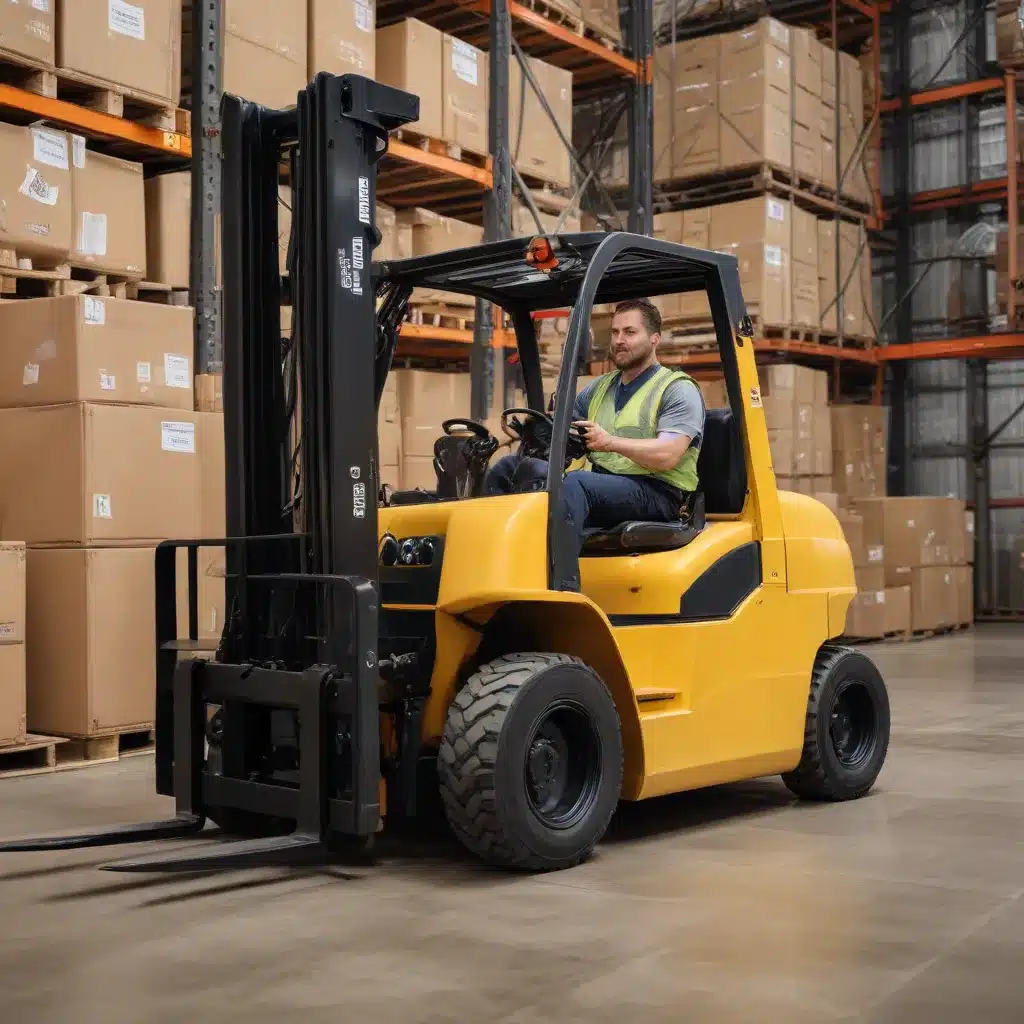
Unlocking Proactive Safety with Connected Forklift Solutions
In the dynamic world of logistics and warehouse operations, safety is paramount. Forklifts, the workhorses of material handling, play a crucial role in maintaining efficiency and productivity. However, the inherent risks associated with forklift operations necessitate a proactive approach to monitoring and incident response. Emerging technologies, particularly the Internet of Things (IoT), are revolutionizing the way we manage forklift safety, empowering organizations to enhance visibility, optimize operations, and foster a culture of informed decision-making.
Improving Incident Response with Real-Time Forklift Monitoring
Traditional forklift safety protocols often rely on manual processes and periodic inspections, leaving gaps in real-time visibility. IoT-enabled forklift monitoring solutions change this paradigm, providing a connected ecosystem that streamlines incident reporting and response. Sensors integrated into forklifts, coupled with advanced data analytics, offer a comprehensive view of forklift operations, empowering managers to swiftly address safety concerns.
One such solution, the Honeywell BW Solo, demonstrates the power of connected forklift monitoring. This single-gas monitor with Bluetooth Low Energy (BLE) connectivity enables real-time visibility into the status and safety of forklift operators, allowing supervisors to respond faster and more decisively to incidents. By automating the incident reporting process, the BW Solo eliminates the need for manual documentation, ensuring that safety managers receive immediate alerts on gas concentrations, operator locations, and other critical data.
This real-time connectivity between workers and supervisors, even across vast distances, is a game-changer in the logistics industry. In the event of a gas leak, collision, or other safety incident, the ability to rapidly access critical information can mean the difference between a minor incident and a catastrophic outcome. By empowering supervisors with this level of visibility, IoT-driven forklift monitoring solutions enhance the overall safety culture and responsiveness within an organization.
Optimizing Forklift Utilization and Maintenance
Beyond incident response, IoT-enabled forklift monitoring also plays a crucial role in optimizing fleet utilization and maintenance. By tracking the location, runtime, and diagnostic data of individual forklifts, organizations can gain unprecedented insights into asset performance and deployment.
Forklift tracking solutions, such as those offered by Samsara, provide real-time GPS data, geofencing capabilities, and wake-on-motion alerts. This allows managers to monitor the location and movement of both powered and unpowered equipment, ensuring that forklifts are deployed efficiently and preventing unnecessary transfers between job sites. Additionally, the ability to track engine hours, diagnostics, and fault codes enables proactive maintenance scheduling, reducing unexpected downtime and enhancing overall equipment reliability.
The integration of IoT sensors and data analytics also empowers organizations to make informed procurement decisions. By analyzing forklift utilization data, managers can identify underutilized assets and reallocate them accordingly, optimizing the fleet size and reducing the need for costly rentals or purchases.
Enhancing Transparency and Customer Satisfaction
In the era of heightened customer expectations, forklift safety and efficiency directly impact the end-user experience. IoT-driven forklift monitoring solutions not only improve internal operations but also enhance transparency and build trust with customers.
Features like “Time on Site” and “Billing Reports” enable organizations to provide detailed records of forklift usage, demonstrating the value of their services and the accuracy of invoicing. Customers can track the progress of their shipments in real-time, gaining visibility into the handling and transit of their goods. This level of transparency fosters stronger relationships, builds customer confidence, and sets the stage for long-term partnerships.
Moreover, the insights gathered from IoT-enabled forklift monitoring can inform process improvements that directly benefit customers. By identifying and addressing inefficiencies, organizations can optimize delivery times, reduce the risk of damage or spoilage, and enhance overall customer satisfaction.
The Future of Forklift Safety: Predictive Analytics and Autonomous Capabilities
As the IoT ecosystem continues to evolve, the future of forklift safety holds even greater promise. The integration of predictive analytics and machine learning into forklift monitoring solutions will enable organizations to anticipate and prevent potential incidents before they occur.
By analyzing historical data on equipment performance, operator behavior, and environmental factors, advanced algorithms can identify patterns and anomalies that signal the need for proactive intervention. Predictive maintenance, for example, can forecast equipment failures and schedule servicing before costly breakdowns. Similarly, driver fatigue monitoring and personalized coaching can help mitigate the risk of operator-related incidents.
Moreover, the advent of autonomous and semi-autonomous forklift technologies will further transform the safety landscape. These advanced systems, equipped with robust sensor suites and real-time decision-making capabilities, can navigate warehouses and job sites with heightened precision, reducing the potential for collisions, pedestrian strikes, and other safety hazards.
Embracing the Future of Forklift Safety
As the logistics and material handling industry continues to evolve, the adoption of IoT-driven forklift monitoring solutions is no longer a luxury but a necessity. By enhancing visibility, improving incident response, optimizing fleet utilization, and fostering transparency, these connected technologies empower organizations to prioritize safety, boost efficiency, and deliver a superior customer experience.
For Forklift Reviews, the future of forklift safety lies in the seamless integration of IoT, predictive analytics, and autonomous capabilities. As an industry leader, we encourage organizations to embrace this transformative technology and embark on the journey towards a safer, more responsive, and more resilient material handling ecosystem.
By leveraging the power of connected forklift monitoring, organizations can unlock new levels of operational excellence, cultivate a culture of proactive safety, and position themselves for long-term success in the ever-evolving logistics landscape.
Key Takeaways:
- IoT-enabled forklift monitoring solutions provide real-time visibility into forklift operations, enhancing incident response and safety management.
- Connected forklift technology automates incident reporting, empowering supervisors to respond faster and more decisively to safety threats.
- Forklift tracking and diagnostics data optimize fleet utilization, maintenance planning, and procurement decisions.
- Transparent forklift usage reporting and real-time shipment tracking improve customer satisfaction and build trust.
- The future of forklift safety lies in predictive analytics and autonomous capabilities, enabling organizations to anticipate and prevent incidents before they occur.

